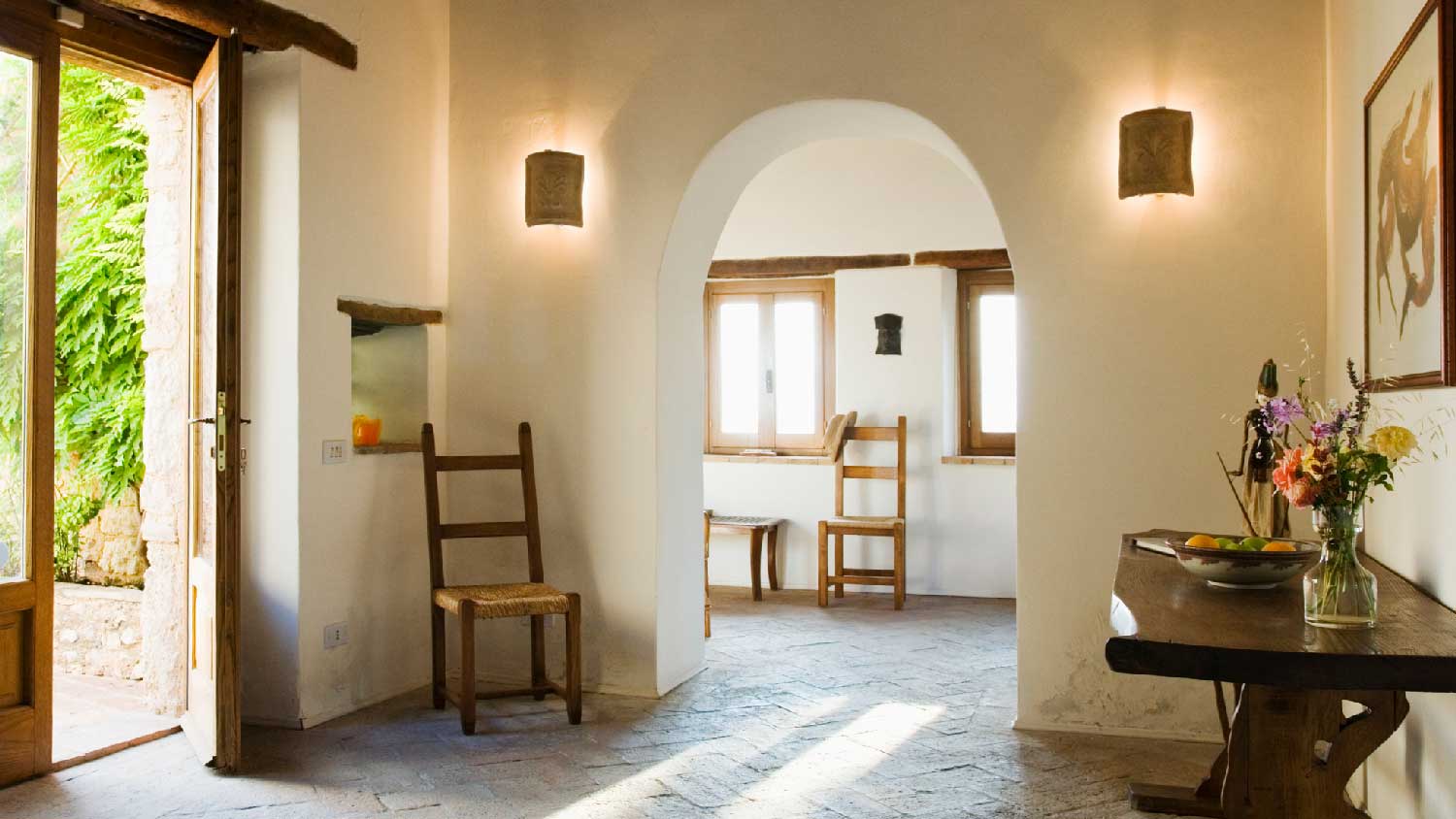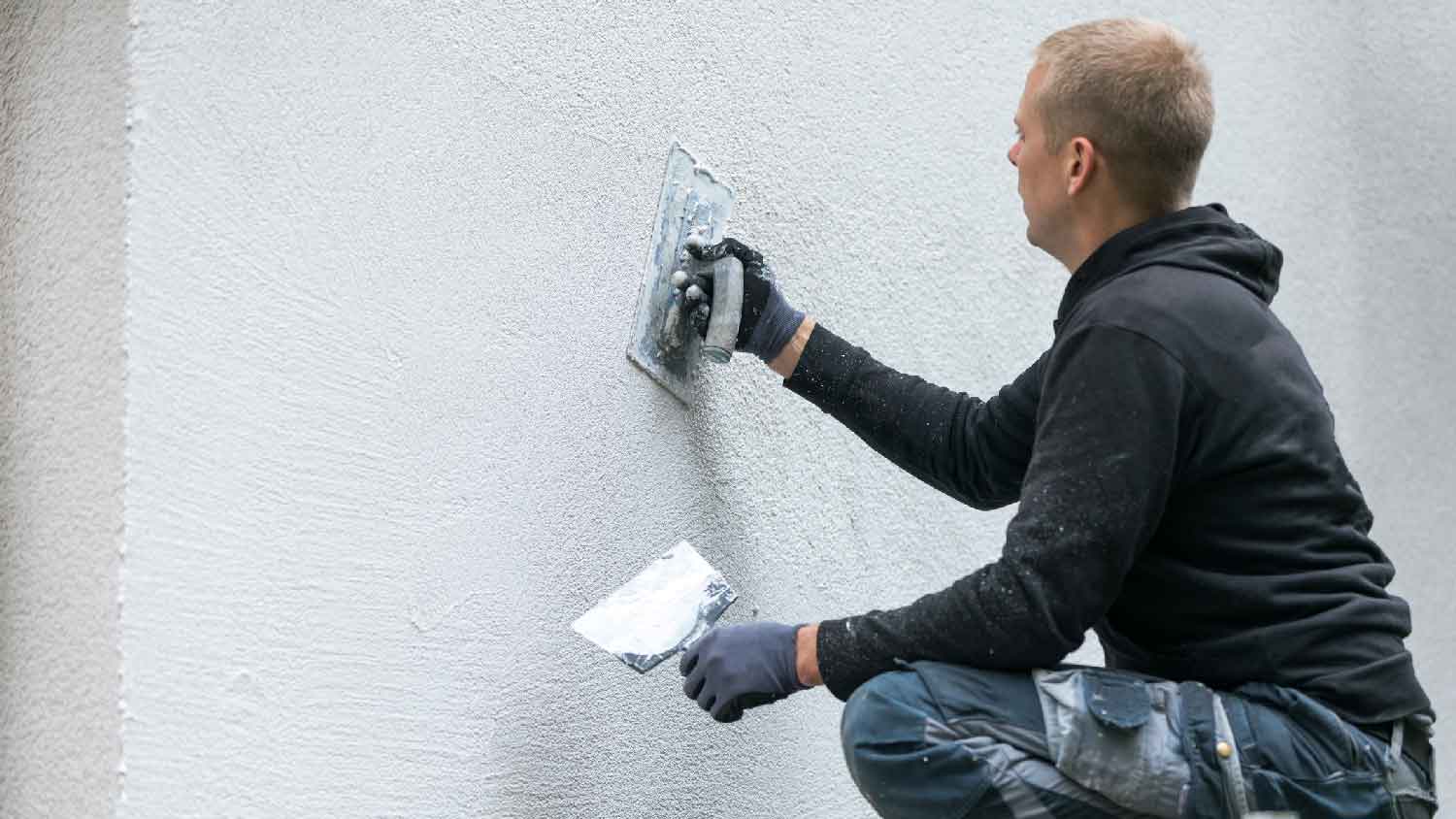
Discover the cost to stucco a house in 2025, including average prices, key factors, and tips to help you budget and plan your stucco project with confidence.
Stucco service costs depend on your project and location. Check with a local pro for your specific job.
Stucco inspection costs vary by home size, stucco type, and inspection type.
Specialized tools or moisture testing can increase total price, and add-ons like detailed reports or follow-up visits may further affect cost.
A thorough stucco inspection can help you spot hidden issues before they become expensive problems.
A stucco inspection costs $850 or between $500 and $1,500 on average. Depending on your home’s size, location, and inspection complexity, stucco inspections cost as low as $395 or as high as $1,950. Most inspectors charge a flat rate, but some may bill per square foot or by inspection type. Expect to pay $0.20–$0.50 per square foot for larger properties.

Understanding what affects stucco inspection cost can help you plan your budget and choose the right type of inspection for your home. Let’s look at the main factors impacting price.
Stucco inspections come in several forms, each with a different level of detail and cost. A basic visual inspection involves a walkaround to look for obvious signs of cracking or damage. Moisture testing uses probes or meters, while advanced inspections may include infrared scanning to spot hidden leaks.
A basic inspection is best for routine checks or if you’re preparing to sell. Advanced inspections are recommended when you suspect water damage or if your stucco is older or has a complicated design. Each type includes different services and affects your overall stucco inspection cost.
| Inspection Type | Description | Cost Range |
|---|---|---|
| Visual inspection | Exterior walkaround, checks for cracks, staining, and obvious issues | $400–$600 |
| Moisture probes | Uses moisture meters or probes, may include some invasive methods | $600–$1,500 |
| Infrared imaging | Thermal imaging to detect hidden moisture or leaks behind stucco | $800–$1,500 |
The size of your home has a direct impact on stucco inspection cost. Smaller homes and condos are less expensive, while large single-family homes or estates cost more due to the extra time and effort required. Multi-unit buildings or homes with multiple stories often come with additional fees.
The type of stucco system on your home can affect both the inspection process and the cost. Traditional stucco, synthetic systems (EIFS), or hybrid setups may require different tools and techniques. Inspecting multiple stucco types or older, deteriorating materials can add to the total cost.
Stucco inspections are performed by certified stucco inspectors, specialized home inspectors, engineers, or experienced contractors. Hourly labor rates vary, but most local stucco inspectors bill with flat fees. Inspectors with advanced certifications or strong reputations may charge more, and costs can be higher in cities with a high cost of living.
A standard inspection takes two to four hours, while advanced or invasive work may take a full day. Regional price differences also impact stucco inspection cost, with higher rates in major metro areas.
Home inspections don't cover everything. Swimming pools, appliances, sewers, pest control, lead paint, hazardous materials, fireplaces, and chimneys are some of the main items not covered under standard home inspections. You'll need an add-on or specialty inspection to cover these things.
Caring for your stucco doesn’t end after the initial inspection. Ongoing costs include regular maintenance, periodic checks, and potential repairs based on inspection results.

After your inspection, you may need to take on routine stucco maintenance tasks like sealing cracks, caulking joints, or making minor repairs.Maintenance should be performed every few years or as recommended by your inspector. Staying proactive helps protect your stucco and extend its lifespan.
Stucco inspections often uncover problems that require repairs. The inspection findings will guide the stucco repair cost and scope—catching issues early means lower repair costs. Common stucco fixes include:
Patching cracks: $8–$20 per sq. ft.
Hole repair: $250–$450 per hole
Section replacements: $7–$9 per sq. ft.
Water damage remediation: $30–$50 per sq. ft.
Homeowner’s insurance may cover stucco-related issues if they result from a covered peril, like storm damage. However, pre-existing problems or gradual deterioration are excluded. Inspection findings can impact your insurance premiums or claims—some insurers request stucco inspection reports before issuing or renewing policies. Adding an insurance rider for stucco homes adds to your annual costs, depending on your provider and coverage needs.
Hiring a local stucco inspector ensures that hard-to-spot issues like moisture, cracks, and structural concerns are identified before they become costly problems. Pros have tools and materials that allow them to see hidden issues with your stucco that would be impossible for the untrained eye to spot. A certified inspector can also provide a detailed report and clear recommendations, saving your home from future mishaps or reassuring potential buyers if you are selling.
A stucco inspection is a task that calls for a professional to get the detailed report that you need:
A pro has years of experience and knowledge to spot issues quickly and provide solutions.
Professional inspectors understand how different stucco systems work, and will be able to identify yours and what specific processes it requires.
A formal inspection report can support warranty claims or negotiations during a real estate transaction.
Inspectors often use moisture meters, thermal imaging, or probe testing for more accurate diagnostics.
Some situations call for additional services beyond a standard inspection. These options can add to your stucco inspection's value with greater insight and documentation. Try these cost-saving tips:
Schedule inspections during off-peak seasons for better rates.
Bundle stucco inspection with other home inspections, such as pre-sale or roof checks.
Get multiple quotes from certified stucco inspectors.
Prepare your property in advance to minimize access fees.
Opt for a visual inspection first, then add advanced testing only if needed.
Address minor repairs before inspection to avoid additional charges.
Ask about discounts for repeat customers or referrals.
Discuss what type of stucco system your home has. If you aren’t sure, ask if they will be able to identify it for you through photos or on-site.
Have the approximate square footage ready to get an accurate quote.
Inquire whether or not you will be able to receive a formal report from your stucco inspection.
Home is the most important place on earth, which is why Angi has helped more than 150 million homeowners transform their houses into homes they adore. To help homeowners with their next project, Angi provides readers with the most accurate cost data and upholds strict editorial standards. We extensively research project costs to develop the pricing data you see, so you can make the best decisions for you and your home. We rely on reputable sources, including the U.S. Bureau of Labor Statistics, academic journals, market studies, and interviews with industry experts—all to ensure our prices reflect real-world projects.
Want to help us improve our cost data? Send us a recent project quote to [email protected]. Quotes and personal information will not be shared publicly.
From average costs to expert advice, get all the answers you need to get your job done.

Discover the cost to stucco a house in 2025, including average prices, key factors, and tips to help you budget and plan your stucco project with confidence.

Discover the average stucco repair cost, key price factors, and ways to save. Get expert tips to budget your stucco repair project with confidence.

Follow these simple, affordable steps to hang pictures on plaster walls without worrying about the plaster cracking.

Stucco and plaster may seem similar, but they have some key differences. Learn more about stucco and plaster and where to use each one.

Stucco is a popular siding known for its durability, curb appeal, and long lifespan, but how long does stucco last? Here’s everything you need to know.

Choose the right pro for stucco installation to get the best professional-quality results. Learn who does stucco installation and the benefits of hiring a pro.